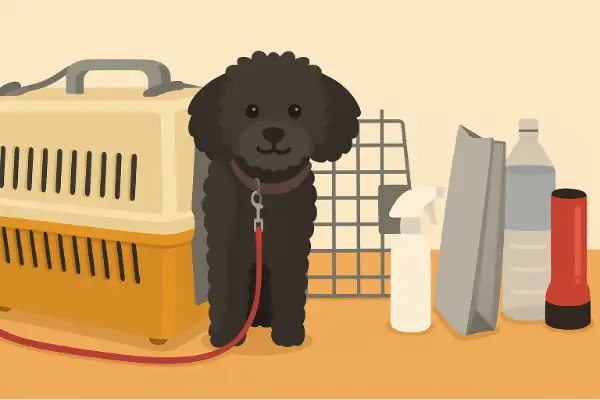Want to move, but don’t want to be separated from your pet, which is also a member of the family?
Or maybe you want to take the opportunity of moving to a new place to get a pet! You may be thinking, “I’d like to have a pet when I move out! Currently, approximately one in three households in Japan has a pet, and not only dogs and cats, but also reptiles, tropical fish, hamsters, and rabbits seem to be popular. It is apparent that people are seeking healing from living with pets and deepening communication within their households. Pets also seem to enrich people’s lives by broadening their circle of friends and improving their health through exercise by taking walks together.
Is it expensive to have a pet?

There are initial costs involved in bringing a pet into your home in addition to the purchase cost. Major examples include vaccinations and vaccines, food and treats, collars, toilets, etc. Some pet shops will complete a health checkup prior to the pet’s arrival. Some pet stores complete a health checkup in advance or include it in the purchase cost, so check with them individually. In addition, even amid an enjoyable life with your pet, there will be expenses for daily food, medical treatment in case of emergency, trimming, insurance premiums, and utilities. Although the amount varies depending on the type and size of the pet, a small dog is said to cost around 11,000 yen per month to keep.
Pet supplies to prepare when keeping a pet

When keeping a pet, you need to prepare the necessary supplies for each animal. Here is a list of basic supplies needed to keep dogs, cats, hamsters, and rabbits.
| Dogs | Collars Leads Cages/play pens Toilet supplies Food and water bowls Food Brushes Toys, etc. |
| Cats | Toilet supplies Scratching posts Carrier cases Brushes Food and water bowls Food Toys, etc. |
| Hamsters | Cages Bedding Running wheels Beds Water dispensers Water bottles and food bowls Food, etc. |
| Rabbits | Cages Toilet supplies Chew toys Water bottles/food bowls Food and hay Bedding, etc. |
Disaster preparation for pets

In a world where disasters can happen unexpectedly, it is very important to prepare in advance to ensure the safety of your beloved pets. Let’s see what preparations and mindset are necessary as pet owners.
What pet owners should do in advance
- Collecting information on evacuation shelters
Check your local government’s disaster prevention map or website in advance for nearby evacuation shelters that allow pets and confirm the evacuation routes. That said, it is also a good idea to prepare alternative options. These may include the homes of relatives, friends, or pet hotels. This will ensure you are prepared even if nearby evacuation shelters do not accept pets.
- Preparing your pet’s evacuation kit
Prepare an evacuation kit for your pet, including food and water for 5 to 7 days, a carrier, toilet supplies, and other essential items. If your pet gets lost, having a microchip or an ID tag would also help.
- Training and health management
It is also important to follow health management procedures, such as vaccination and parasite removal. Also, if they have excessive barking and biting habits, be sure to train your pet so that it does not become a disturbance at the evacuation shelter.
What pet owners should do in the event of a disaster
In the event of a disaster, prioritize the safety of yourself and your pet. Make sure your pet is secured with a leash or carrier to prevent them from running away, and then quickly evacuate together.
“Evacuating together” with your pet refers to the act of evacuating with your pet to an evacuation shelter together. Note that this is not the same as “staying together” at the shelter with your pet.
Pet-friendly housing is a must!

Since it is very important to have a good living environment for your pet, you should not forget the rent for a pet-friendly property as an expense for your pet. A survey shows that the most common reason why tenants of rental properties want to keep pets but cannot is “because it is prohibited by contract. To avoid problems with neighboring residents, if you want to live with pets in a rental property, you should look for a property with a “pet advisory” or “pet-allowed” clause or a “pet-friendly” apartment. Although the number of rental properties that allow pets is increasing due to the recent pet boom, the supply of pets-allowed rental properties is still low, at about 15% of the total number of properties in Japan. Even in pet-friendly apartments, the rent and security deposit are often set higher, and in some cases, additional conditions may be added, such as an extra key money or a write-off of the entire security deposit.
To avoid having to give up your pet for financial reasons, you must understand how much it will cost and make sure that you can afford it before you welcome it into your home. It is very important to manage your money so that you can continue to enjoy your life with your pet.
Village House offers a wide variety of pet-friendly apartments for rent at inexpensive rent prices!
Why don’t you start an affluent life with your pet at Village House?
Related articles:



